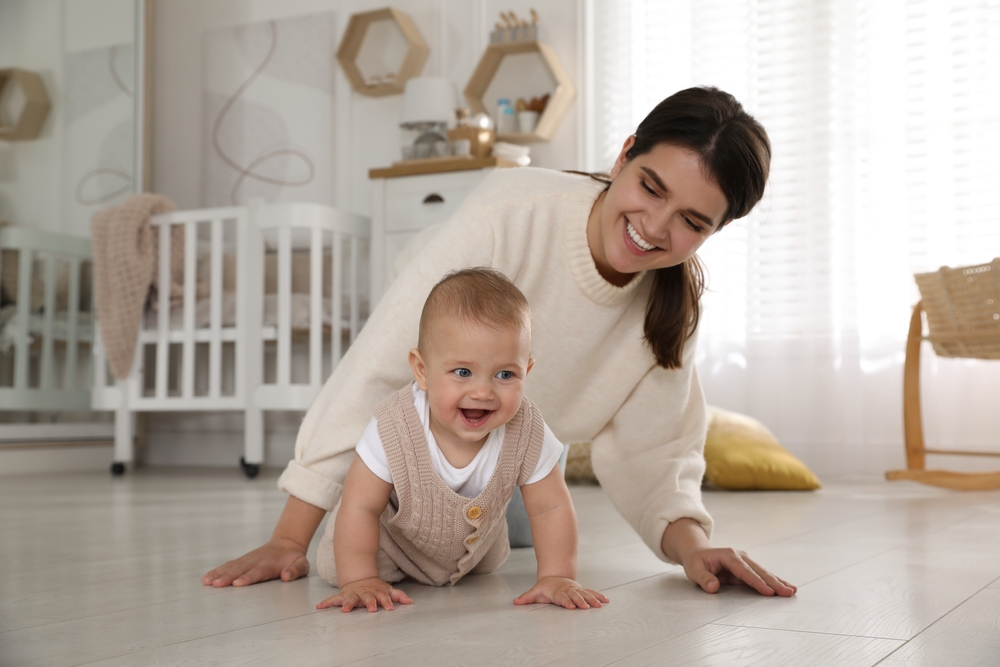Babies grow and develop at an astonishing rate during their first few years of life. One of the most exciting milestones is when they transition from crawling to walking. It’s a significant achievement that brings newfound independence and opens up a whole new world of exploration for your little one. In this article, we will explore the journey from crawling to walking, the developmental milestones involved, and how you can support your baby through this exciting phase.
Before we delve into the walking phase, it’s essential to understand the significance of crawling. Crawling plays a crucial role in a baby’s development as it helps strengthen their upper body and core muscles. It also enhances coordination and spatial awareness, preparing them for the next milestone of walking.
Signs Your Baby is Ready to Walk
Every baby develops at their own pace, but certain signs indicate that your little one is getting ready to take those first steps. Look out for the following indicators:
- Pulling up to a standing position using furniture or other objects for support.
- Cruising along furniture while holding on.
- Standing independently for short periods with good balance.
- Taking small, tentative steps when you hold their hands.
The Transition from Crawling to Walking
The transition from crawling to walking is an exciting and gradual process. Initially, your baby may experiment with a few wobbly steps while holding onto your hands. As they gain confidence and strength, they will start to take independent steps. It’s important to remember that this journey is unique to each child, and some may take longer than others to become proficient walkers.
Developing Balance and Coordination
Walking requires a significant development of balance and coordination skills. As your baby progresses, they will learn to shift their weight, maintain an upright posture, and coordinate their leg movements. Activities that promote balance, such as sitting on a stability ball or using a balance board, can be beneficial during this stage.
Strengthening Leg Muscles
Strong leg muscles are crucial for walking. Encourage your baby to engage in activities that help build lower body strength, such as tummy time, rolling, and playing games that involve kicking or stretching their legs. These exercises will assist in developing the necessary muscle tone and control required for walking.
The Role of Fine Motor Skills
Fine motor skills, such as grasping and manipulating objects, also play a part in the development of walking. As your baby gains control over their hands and fingers, they become more adept at holding onto surfaces and supporting themselves while taking steps. Provide them with toys and objects that encourage gripping and manipulating to strengthen their fine motor skills.
Encouraging Walking: Tips for Parents
As parents, there are several ways you can support and encourage your baby during their journey from crawling to walking. Here are some helpful tips:
- Provide a safe and open space for exploration.
- Allow plenty of supervised tummy time to strengthen muscles.
- Use furniture or baby walkers to offer support during practice.
- Engage in interactive games that promote balance and coordination.
- Offer praise and encouragement for every milestone achieved.
Creating a Safe Environment
Safety should be a top priority as your baby becomes more mobile. Babyproofing your home is essential to prevent accidents and create a safe environment for exploration. Install safety gates, secure furniture to the walls, and cover electrical outlets to minimize potential hazards.
Babyproofing Your Home
When babyproofing your home, consider the following measures:
- Cover sharp corners of furniture with padding.
- Secure cabinets and drawers with childproof locks.
- Keep small objects out of reach to prevent choking hazards.
- Place safety gates at the top and bottom of staircases.
- Install window guards and use cordless blinds.
Supporting Your Baby’s Confidence
Building your baby’s confidence is crucial during this developmental phase. Celebrate their efforts and offer support as they explore their newfound mobility. Allow them to practice walking in different environments, both indoors and outdoors, to build confidence and adaptability.
The Role of Motor Skills in Cognitive Development
Walking is not only a physical milestone but also plays a vital role in cognitive development. As babies learn to walk, they engage with their environment, explore new spaces, and develop spatial awareness. This exploration fosters cognitive growth, problem-solving abilities, and an understanding of cause and effect.
Conclusion
The journey from crawling to walking is an incredible milestone in your baby’s development. It involves a progression of physical and cognitive skills, from strengthening muscles and improving balance to exploring the world around them. As a parent, your support, encouragement, and a safe environment are crucial in fostering your baby’s confidence and ensuring their successful transition into walking.
Now is the time to celebrate and cherish these precious moments as your baby embarks on this exciting journey of mobility and independence.
FAQs
Q: When do most babies start walking?
A: Most babies take their first steps between 9 and 12 months, but the range of normal development can vary.
Q: Should I be concerned if my baby is not walking yet?
A: Not necessarily. Babies develop at different rates, and some may take longer to start walking. Consult your pediatrician if you have concerns about your baby’s development.
Q: Are baby walkers helpful for learning to walk?
A: Baby walkers can provide support and entertainment but should be used with caution. They may delay walking independently and pose safety risks.
Q: How can I help my baby if they seem hesitant to walk?
A: Encourage and support your baby’s efforts without applying pressure. Provide a safe and stimulating environment for practice, and consult your pediatrician if you have concerns.
Q: Are there any warning signs of a developmental issue related to walking?
A: If your baby consistently favors one side or shows persistent difficulties with balance or coordination, consult your pediatrician for a comprehensive evaluation.

